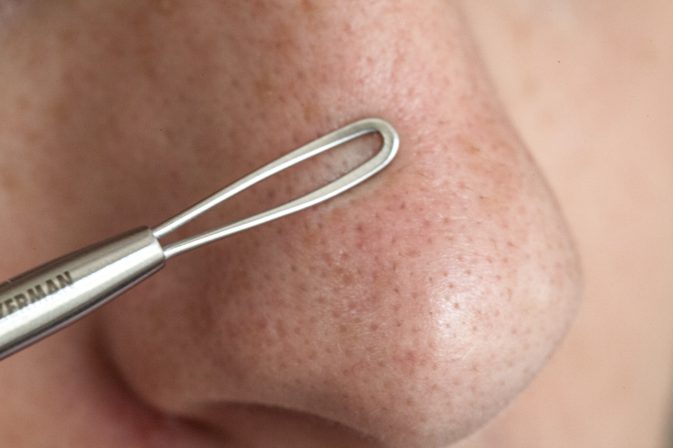Steps can be taken to cut the risk of exposure to food allergens.
A food allergy occurs when the body’s immune system triggers an abnormal response to food.
Symptoms of allergic reaction to a specific food range from sneezing and nasal congestion to anaphylaxis.
There is currently no cure for food allergies, and avoiding the food to which you are allergic is the only way to prevent a reaction.
However, measures can be taken to reduce the risk of serious health consequences by avoiding food allergens and quickly recognizing and managing allergic reactions to food if they occur.
Here are Medical News Today‘s suggested tips and tools for living well with food allergies.
1. Read food labels
Reading food labels might seem like an obvious way to avoid foods that you are allergic to, but research has indicated that confusing food labels may put consumers with food allergies at an increased risk of facing an allergic reaction.

A study revealed that consumers with concerns about food allergies often misunderstand food labels about food allergen exposure that read “manufactured on shared equipment” or “may contain.”
Individuals with food allergies should stay away from food products with these labels to prevent a severe allergic reaction.
Yet, around 11 percent of the consumers surveyed purchased products with a “may contain” label and 40 percent bought foods with a “manufactured in a facility that also processes” statement on the label.
The Food Allergen Labeling and Consumer Protection Act of 2004 (FALCPA) is a law that requires that all food labels in the U.S. must list ingredients that may cause an allergic reaction.
Though there are at least 160 foods that can lead to allergic reactions in those with food allergies, the act applies to the eight most common allergenic foods that account for 90 percent of all food reactions.
The eight most allergenic foods include:
- milk
- eggs
- fish
- crustacean shellfish
- tree nuts
- peanuts
- wheat
- soybeans
The FALCPA enforces that any of these eight foods, or any ingredient that contains protein derived from them, are designated as a “major food allergen.”
Food allergens are identified on food labels in one of three ways:
- Ingredient name. For example, the allergen name “milk” may be included in the ingredient name “buttermilk.”
- Following the ingredient name. The food allergen may appear after the ingredient, such as “whey (milk),” “lecithin (soy),” and “flour (wheat).”
- After the ingredients list. A “contains” statement may appear next to the list of ingredients, such as “contains milk, soy, and wheat.”
The FALCPA’s labeling requirements only apply to foods that “may contain” an allergen and not to the potential presence of major food allergens due to cross-contact during manufacturing.
Including warning labels such as “may be prepared in a facility that also uses nuts” or “may contain trace amounts of nuts” is voluntary.
Always be cautious when buying products without labels — such as a cake from a pastry shop.
2. Avoid cross-contact and cross-reactivity
Individuals with food allergies must be aware of the potential cross-contact of non-allergenic with allergenic foods, and cross-reactivity among related foods.
Cross-contact
Cross-contact occurs when an allergen is unintentionally transferred from a food that contains the allergen to a food that does not contain the allergen.

Cross-contact could occur when an allergen is applied directly or indirectly to another food.
For example, direct cross-contact is removing cheese from a cheeseburger to make it a hamburger.
Indirect cross-contact would be using the same utensil to turn the hamburger that was used to flip a cheeseburger.
You can avoid cross-contact with the following tips:
Purge your kitchen. Remove all products that you can’t eat from your refrigerator, freezer, and pantry.
Clean all cooking apparatus, including cooking utensils, cookware, stovetop, and oven, with soap and water.
Organize separate food preparation areas if you are sharing a kitchen with roommates or family members who eat foods that you can’t.
Cook allergy-safe foods first if you are cooking a range of foods.
Cover allergy-safe foods to prevent them being spluttered with unsafe foods.
Thoroughly wash your hands with soap and water if you have handled a food allergen. Soap and water and commercial wipes will eliminate food allergens, but water alone or sanitizing gels won’t.
Scrub down tables and counters with soap and water after cooking every meal.
Never share food to ensure that cross-contact does not occur.
When dining out, be sure to discuss cross-contact and procedures for cooking meals that are allergen-free with restaurant personnel.
Cross-reactivity
Cross-reactivity occurs when the proteins in one food are similar to the proteins in another. The immune system may identify the proteins as being the same and cause an allergic reaction.
Some people that are allergic to shellfish or finned fish may need to avoid eating foods from the entire food group due to high levels of cross-reactivity, while others will have an isolated food allergy — to just swordfish, for example.
If you want to eat foods from the same food group as the food you are allergic to, you might want to consider trying a skin test or oral food challenge to evaluate whether the food may cause a reaction.
3. Recognize your symptoms
If you live with a food allergy, it is crucial that you learn to identify the signs and symptoms of an allergic reaction — particularly anaphylaxis. Being able to spot the early symptoms of a reaction could save your life.

An allergic reaction to food can affect the body in the following ways:
- skin — itching, redness, hives, red bumps, swelling under the skin, rash
- eyes — itching, tears, redness, swelling around the eyes
- upper respiratory — runny nose, sneezing, nasal congestion, hoarseness, dry cough, itching
- lower respiratory — chest tightness, wheezing, shortness of breath, cough
- mouth — swelling of tongue, palate, or lips, itching
- gastrointestinal — nausea, reflux, vomiting, diarrhea, abdominal pain, bloody stools
- cardiovascular — rapid or slow heartbeat, dizziness, fainting, low blood pressure, loss of consciousness
- other — uterine contractions, sense of “impending doom”
Symptoms of anaphylaxis can be a challenge to recognize. If you’re experiencing any one of the three conditions listed below within minutes to several hours after food exposure, it is likely that you are facing an anaphylactic episode:
- Any symptoms that involve your skin, the moist mucosal tissue lining of your nose, mouth, or gastrointestinal tract, impaired breathing or a drop in blood pressure, confusion, or loss of consciousness.
- Two or more of the following symptoms: Hives, itchiness, swelling of the tongue or lips, trouble breathing, a drop in blood pressure, abdominal cramps, or vomiting.
- A drop in blood pressure that leads to weakness or fainting.
Anaphylaxis can occur as: a single reaction after exposure to allergenic food that improves with or without treatment; two reactions that occur between 8 and 72 hours apart; or a long-lasting reaction that may continue for hours or even days.
An intramuscular injection of epinephrine should be used to treat an anaphylactic reaction as soon as possible after it occurs.
4. Prepare an emergency action plan
If you have a life-threatening food allergy, it is recommended that everyone you come into contact with knows what to do during an allergic reaction.

Be prepared and make sure that you have an anaphylaxis emergency action plan.
An anaphylaxis emergency action plan tells you, your family, friends, co-workers, school staff, or caregivers what to do if you have a severe allergic reaction.
This is to be filled in and signed by a doctor. It provides details of your name, age, what you are allergic to, any drugs that you are taking, and a list of the symptoms of anaphylaxis.
Steps on what to do in the event of an allergic reaction — such as the dosage of EpiPen, when to call 911, and your emergency contacts details — are also included in the plan.
5. Know how to use an auto-injector
Anaphylaxis can be treated with epinephrine (also known as adrenaline). Epinephrine works best when injected within minutes of an allergic reaction and rapidly treats throat swelling, impaired breathing, and low blood pressure.

Learn how to use your epinephrine auto-injector before you have to use it for an allergic reaction.
It is essential that you, your family, teachers, or colleagues learn how to use an epinephrine auto-injector so there is no delay in you receiving the drug.
A delay in using epinephrine is linked with a decline in well-being and even death from anaphylaxis within 30–60 minutes.
Carry your epinephrine auto-injector with you at all times. Make sure that it is easily accessible and can be quickly located by others.
Each time that you receive a refill for your injector, you and a family member should always review the instructions. Instructions sometimes change and may differ between one auto-injector and another.
It can also be helpful to watch videos or view pictures of how to administer the prescribed auto-injector.
Use your epinephrine auto-injector immediately when having an allergic reaction if you have:
- difficulty breathing
- trouble swallowing
- a tight throat
- repetitive coughing
- a weak pulse
- hives, rashes, or swelling of the skin
- vomiting, diarrhea, or abdominal pain
Once you have administered the epinephrine, call 911 and let the dispatcher know that epinephrine has been used and that more may need to be supplied by the emergency responders.
Make sure that you always wear a medical band or have an anaphylaxis wallet card that notes your allergy, name, and number of your emergency contact.























